Under Royal Protection
A family story about fleeing from war, survival, and rebuilding
This is the last newsletter of 2023 - Thin Ink is taking a two-week break - so I wanted to do something quite different and personal. In many ways, this newsletter is a personal journey in itself since it covers issues I care about, but apart from the noodle essay from two years ago, I haven’t done something this private.
It’s unnerving and feels very self-indulgent to write so openly about oneself - I come from that school of journalism where you should *never* be the story - but I wanted to write this for two reasons.
One, I’ve always been very conscious of my privilege - not only being born in a loving, educated, and affluent family in a very poor country but in a family that wanted me to be strong, independent, educated, and caring, and had the means to equip me. Top that off by being in the “right” race and “right” religion, well, you can say I won the lottery. But it was a pure accident of birth. I work tremendously hard to be where I am, but I know I had a big helping hand. So this story below, which begins in Bagan, possibly the most touristy place in all of Burma/Myanmar, adds another layer to how I see my place in this world.
But the real, main, reason is this - this is a love letter to my mother, who turned 84 last week, and who not only taught me most of what I know but who also gave me the world’s best big sister. So much of my love for food, humanity, and travel came from them. If the editors I thanked last week made me the journalist I am, my mum and my sis made me the human I am (especially the good bits).
Special thanks also to Kelly, my Kite Tales-partner-in-crime, who turned my ramblings into much better prose.
Perched on the banks of the Irrawaddy River in central Myanmar is the ancient capital of Bagan. Marco Polo, who visited in 1282, supposedly call it, “a gilded city alive with tinkling bells and the swishing sounds of monks’ robes”, a reference to the splendour of thousands of glittering pagodas sparkling on the dusty plain.
In the interest of accuracy, I should add that while I could find scholars’ writings about the legendary Venetian’s venture to Myanmar, all the references I could find of his quote are on the websites of travel companies. So make of that what you will. Still, regardless of whether Marco Polo truly said it or not, it is an apt description.
Bagan is the beating heart of Bamar Buddhism, a World Heritage site that is one of the country’s best-known and best-loved destinations, attracting huge numbers of foreign tourists and even more locals. Well, at least that was the case before the military coup nearly three years ago.
The temples here have been the de facto image of the country for decades. The structures dotted around the 40-square-kilometre plain have been featured in almost every single book, magazine article and documentary on Myanmar.
Around 4,000 temples remain, dating from the 11th to 13th centuries, though some historians believe there were once many thousands more strewn across the landscape -- a constellation of merit-making.
It may lack the lost kingdom quality of Cambodia’s Angkor temple complex or the sheer scale of Indonesia’s Borobudur, but to me, it has a mythical and sacred atmosphere that is unmatched. This is most palpable around dawn and dusk when mist envelopes the temples, many in ruins, and the sound of temple bells mingle with those of the cowherds coaxing their animals across the plains.
Both local and foreign travellers follow a well-worn path - the claustrophobic Manuha temple built by a captive Mon king to show the cramped, closed conditions of his detention, the snow-white Ananda temple, known for its beauty and tower-like spire on top, and the small, cylindrical-shaped Bupaya for a view across the Irrawaddy.
For my family though, one temple holds a deeper connection.
It lies on the eastern edge of Old Bagan, near the small agricultural village of Minnanthu, and away from the famous places of worship. The best-known pagoda nearby is one built by a king who became so infamous for fleeing the invading Mongols in 1287, subsequently leading to the demise of the Bagan Dynasty, that he got a new moniker - “He who fled from the Chinese”.
The temple I want to talk about today is a 13th-century one called Thambula.
This is where my grandfather brought his young family after the Japanese Army invaded Burma/Myanmar in 1942 and the sights and sounds of war - the popping of gun fire, the deafening boom of bomb blasts and the roaring of war planes overhead - became a daily occurrence for ordinary people.
They were living in Mandalay, the country’s second largest city, but made the perilous journey 150 kilometres southwest down the Irrawaddy to find refuge in a place that has been a spiritual sanctuary for hundreds of years -- the vast temple complex of Bagan.
Thambula is a rust-coloured pagoda nestled in a walled compound, with delicate stucco details on the exterior and is flooded by natural light that illuminates fine murals on its internal walls.
But my family chose it more for security than aesthetics: It was isolated, situated inland and far from the river, it had doors -- a rarity among Bagan temples -- and its walls were a couple of feet thick. Four families made a temporary home here, each taking a corner.
“The stonework is massive so even if there were planes with machine guns, we were safe. That’s why we came here,” my mum told me, as we stood looking at it on a bright, crisp January morning a few years ago, before the latest heartache and bloodshed tore apart so many families.
“The place we were staying before was not safe at that time. (The adults) said we’d better move. Your grandpa’s friend was the head of the archeological department. He was looking for a safe place for his family also and he said, “This is safe.” He invited us to come along.”
A plump, oft-smiling man, my grandfather was the centre of our family universe growing up. He was the elder of two sons born to landowners who had vast swathes of paddy fields and mango groves in and around the small but prosperous textile village of Paleik, a half-hour drive from Mandalay.
He went to Mandalay for his bachelor degree and met my grandmother, who was a few years older, and, according to relatives who knew her, the less beautiful but brainier of two sisters, a tiny fact I always loved recounting to anyone who would listen.
My grandfather was a contemporary of Myanmar’s independence hero Aung San and he owned a textile factory and cinemas before they were nationalised by General Ne Win’s government following the 1962 coup. He later became a movie producer and spent most of his life promoting the kind of Buddhism I know and love - tolerant, open to discussion, and less ritualistic.
I’d been to Bagan many times with my beloved grandfather and sister, but I never really asked him about the time he hid his family in one of its temples. When I finally heard the full story, he had died and I had just my mother’s fragmented childhood memories to rely on.
That day, mum and I had the whole temple to ourselves -- a rare pleasure in Bagan. With so many other famous temples, Thambula’s tourist draw is limited.
At the entrance we passed an obligatory souvenir stall, selling wooden knick knacks and drawings of Bagan murals. But you don’t set up shop here if you have great commercial ambitions. After a cursory sales attempt, the shopkeeper went back to his mobile phone.
The temple is pretty, even if it lacks the grandeur of its more famous cousins. Bamboo scaffolding is woven around its roof, while the doors that once provided physical and mental security to a little group of war-displaced families are locked.
We probably looked like normal devotional day-trippers, a daughter and her elderly mother making some merit as they tread softly in the grounds of a somewhat overlooked stupa, albeit with a sound recorder in the daughter’s hand. But this is an attempt at excavation, one of my family history.
As my mum takes in the surroundings, overlaying what she sees onto her memories, I try to jolt any slither of recollection with probing questions. By then, I’ve had nearly two decades of experience interviewing people. But doing it with your own family is another thing.
Myanmar is the kind of country where family histories and memories can lay hidden for years, buried under the weight of fear, the kind that makes you glance over your shoulder every time a story that deviates from the official narrative is spoken. Before long, they piled on top of each other, each decade adding a new layer of calamity, loss, and secrets.
To be honest, our family story wasn’t even overtly political - well at least not this particular story - and yet somehow I didn’t discover this crucial part of my mother’s and grandparents’ lives until much later. I used to say that the British aren’t the only people who have a habit of keeping a stiff upper lip, that we Burmese do it too. A lot.
Ours was the kind of household where children receive tender loving care when we were babies and support and encouragement in our teens, but we also knew our place. That means we don’t press if they say, “This is not something kids should know.”
As we grew up, love was shown through meticulous planning of our multiple school and tuition schedules, allowing us to listen to pop music despite an underlying fear we might act on the lyrics, and sending us abroad to study when it became clear we wouldn’t get a decent education if we stayed. And of course, realising it wasn’t safe to keep stubborn and opinionated offspring under the junta’s increasingly watchful and paranoid eye.
In other words, it was shown through the practical, logical, actionable stuff rather than with words and hugs. I guess this was also what my grandparents did with the stay in the temple. We did become very good at giving each other mushy birthday cards, the kind of Hallmark classics that tells the recipient how much you really care, without having to express it verbally.
So it was with a considerable amount of trepidation that I put on the journalism hat to interview my own mother. But I really wanted to know as much as I could about my family’s lives during the war years.
“I wasn’t even 5 or 6. I was younger,” my mum said, as she took in the surrounds. “We were here until I think the Japanese started withdrawing from Burma and the British started coming back.”
I made a mental calculation. That means two years at the very least. They were running away from Japanese airstrikes, mum told me.
“In those days, there were those big planes. People called them the big buffalo because they were black and huge,” she recalled.
“They usually use machine gun from those planes down along the river, on the boats and on land. When Aunty Daisy’s father passed away, your grandparents had to go upriver by boat and only at night because the planes come out during the day.”
My mum does not remember being particularly frightened of the big buffaloes thundering overhead -- perhaps she was too young to fully appreciate the danger -- and her memories of temple life are a happy muddle of playing inside the ancient structure and being entertained by cousins and aunts. And tucked inside Thambula, she felt protected.
“It has these huge corners, you know, where even if you shoot from close by, it’s not accessible. These areas, you see, they couldn’t penetrate. And we had enough light,” she said, pointing to the cavernous space inside.
“The other pagodas, they may be massive but they don’t have doors and security. They’re just open. This one has doors. Maybe that’s why Uncle (my grandfather’s archeologist friend) chose this one.”
“Another reason I think is because this is out of the city limits. So planes coming in are not interested in this remote area. They’d be more interested in the towns and river banks.”
Some planes did find their way to my grandparents. A legendary story in our family had to do with a distant relative known as Ba Ba Sunny (Ba Ba being a generic term for anyone who have reached grandparent age). He turned up one day at the temple, saying he heard his relatives were hiding there.
“We were quite happy to see him because your grandparents hadn’t seen him for quite some time and they welcomed him into the family. He stayed for… I don’t know how long but he stayed for a bit.”
“It turned out he was a paratrooper with the British Air Force and he was on a reconnaissance mission! He was looking around, I guess, and giving reports. That sort out thing. We only found out later.”
I asked my mother how my grandparents reacted when they discovered the ruse, since they could have gotten into big trouble if found to be harbouring a British solider. Were they fuming? No, she said. “We were having quite a good laugh about it.”
My mum and grandparents finally returned to Mandalay in 1945. What they found was the smouldering remains of the once-proud royal city. Almost nothing was left standing, including their own home. It was burnt down during the war.
No one really knows how many people died in Mandalay during World War II. Historians say that after Japanese Mitsubishi bombers attacked the royal city on the night of April 3, 1942, two-thirds of all the buildings were destroyed, up to 8,000 people were estimated to have died, and many more injured, out of a population of 150,000. So who knows what would have happened if my grandparents didn’t evacuate?
I like to think these experiences led them to hold whoever survived close, instead of spending time recriminating.
I always love visiting Bagan, even when I was a child and didn’t know the critical role it played in my mother’s tender years. It helps also that Bagan had a plethora of amazing local restaurants -- obviously I cannot let an issue of Thin Ink go by without any mention of food -- and if my memory serves me correctly, it was one of the first places to offer ‘traditional buffet’.
In a western-style buffet, diners go to where the selection of meat, seafood, appetisers, bread, and deserts are presented, and serve themselves. Well, in Bagan’s Burmese buffets, you get a table full of small plates where you can sample a little bit of everything.
A buffet spread here usually includes all manners of meat curries, tamarind-flavoured sour soups, delicious salads using different vegetables (pennywort is an all-time favourite), fermented fish paste sauce accompanied by fresh, pickled and steamed vegetables (seen as a poor man’s dish but which I love), and multiple dishes of traditional vegetables pounded in a mortar and pestle with garlic and chilies. It is truly a feast.
We went back to Bagan one more time after I interviewed my mother, with my young nieces who had never been there and who were only slightly older than my mum was when she was hiding in Thambula. A couple of months later, COVID-19 hit and Myanmar went into lockdown. Less than a year after, the military seized power.
Thambula was still standing then. It had survived extreme weather, earthquakes and even avoided the worst of the clumsy junta-era renovations. I wonder what it is like now, not just the temple but also the residents and businesses in Bagan which survive on tourism revenue. I wonder how the restaurants are faring, especially the one I used to frequent -- as famous for its delicious dishes as for its surly service.
I also wonder about the millions of people having to uproot themselves and everything they know to protect their loved ones and flee the bombs and airstrikes raining down on them. This is happening not only across Myanmar but all over the world. Most of them won’t have the protection of a place like Thambula. Most would be staying in flimsy bomb shelters.
How many more kids are growing up this way? And how many kids -- and their families -- have had their lives cut short?
I had always thought the temple was named after the consort of legendary Burmese hero, monarch and inveterate womaniser Kyansittha. According to the royal chronicles, Thambula was a country girl who met Kyansittha while he was briefly exiled from Bagan. In the stories of her life, Queen Thambula comes across as brave, principled and determined, so it seems apt that a temple bearing her name - and perhaps a little bit of her spirit? - protected my pioneering mother.
You see, mum was one of the first female engineers in the then-Burma. She remembers being the only woman in a class of 200. She ran a textile factory when I was a child. By the time she retired she was in a senior role at the Ministry of Industry, at a time when it was very rare to see women in top positions, especially those without close military links.
Unfortunately, life isn’t always so neat. Scholars say the temple was actually built by the consort of King Uzana who bears the same name and that perhaps even that might not be accurate. But you know what? I’m sticking to my Thambula.
The last time we visited the temple, I tried to absorb all the little details -- like the inverted tear drops that feature prominently on its walls and the bulging eyes of the small lions on the pillars.
I imagine my mother as a headstrong little girl, her hair chopped into a short bob, running along its corridors and curling up to sleep in one of its corners, protected from the war by its thick walls.
And I imagine my grandfather with his young family, trying to figure out the best way to keep them safe. It is one of my greatest regrets that I never talked to him in detail about his colourful life.
I wish I could ask him what was it like for them during the war, trying to find shelter in these ancient structures while huge armies blazed across the country. He was just in his late 20s, while grandma was in her early 30s. How did they make it all this way from Mandalay? What did they bring with them? Did they wonder if they would ever make it back home?
I know how self-centred this sounds, but every time I stood in front of Thambula -- and even now as I write this -- I couldn’t help but feel an overwhelming sense of relief that they made it out alive.
I wish the same for everyone taking refuge from war and conflict.
Thin’s Pickings - A Special Edition
Big Meat’s Big Win in Europe - EU Scream
How did an initiative supported by 1.4 mln citizens and backed by commissioners and parliamentarians disappear from Brussels’ legislative agenda? In this podcast, James Kanter took a deep dive into how the animal welfare legislation unravelled, based on our investigation that came out in October.
There are cameos from journalists who worked on this investigation, including yours truly, The Guardian’s Arthur Neslen and Food Unfolded’s Silvia Lazzaris. It’s a great listen and I’m not only saying it because I was featured.
Meat Lobby Science: Truth or Tactics - Food Unfolded
An Instagram Reel from the popular science account, which also worked with Lighthouse Reports. They analysed over 1,000 signatures from the Dublin Declaration, which has been used to push back against legislation on animal welfare and environmental issues, to see if those who signed are really as independent as the meat lobby has claimed. It’s short, it’s sweet, and it’s punchy.
Food Systems Take the Stage at COP28: But Will Actions Match Rhetoric? - Istituto Affair Internazionali
My piece for Italian think-tank IAI on the food-climate nexus at COP28 and what needs to be done in 2024. It is also an opportunity for me to quote in full the experts and farmers I spoke to for this piece but couldn’t due to style and space constraints. I found their reflections insightful and I hope you do too.
“There are three positives. The first is the COP28 UAE Declaration on Sustainable Agriculture, Resilient Food Systems and Climate Action. I do genuinely think declarations like that send a transformative signal. The second one is the Alliance of Champions for Food Systems Transformation. For a long time, we haven't had a High Ambition Coalition for Food, but we do now. The third is the FAO roadmap, which is not perfect, but it's quite a significant development in its own right. We've never had a roadmap from FAO for food like the IEA for energy. Now we do and we can agree with it, disagree with it, but it helps it helps us move forward.”“In terms of what we do here, the primary thing is we capitalise on the momentum generated by COP28. Many of us have come together more than we ever have. It's been very powerful in that way.”
Edward Davey, partnerships director of the Food and Land Use Coalition (FOLU) and head of the World Resources Institute’s UK office
“What we need to see is that these funds be channeled equitably and all stakeholders that work around the value chains of the food systems have to benefit equitably. Funds should not take long to reach their destinations and to the right beneficiaries.”
“There wasn't a sufficient conclusion on decarbonisation… we must have a clear direction on how we are going to move forward in agricultural production. And insurance was not mentioned. It has to be put on the agenda for small-scale farmers.”
Christine Nabwami, a small-scale farmer in Uganda and member of Eastern and Southern African Small Scale Farmers’ Forum
“Although these COP28 announcements have started a crucial conversation around food, agriculture and climate, they have not translated rhetoric into concrete food systems transformation.”
“Food systems are not only impacted by climate change - they are major contributors to climate change. Countries have just 14 months to revise and submit their NDCs ahead of COP30. We need to focus on emphasising transformational pathways that address both mitigation and adaptation together. This should include incentivising a wholesale shift to regenerative and agroecological production practices, coupled with shifts in consumption patterns - rather than focusing on decarbonising fertilisers and intensifying polluting, extractive and health-harming agricultural and livestock production.”
Patty Fong, Program Director for Climate, Health & Well-Being at the Global Alliance for the Future of Food
All the best for the holiday season and see you in 2024! As always, please feel free to share this post and send tips and thoughts on mastodon @ThinInk@journa.host, my LinkedIn page, twitter @thinink, or via e-mail thin@thin-ink.net.


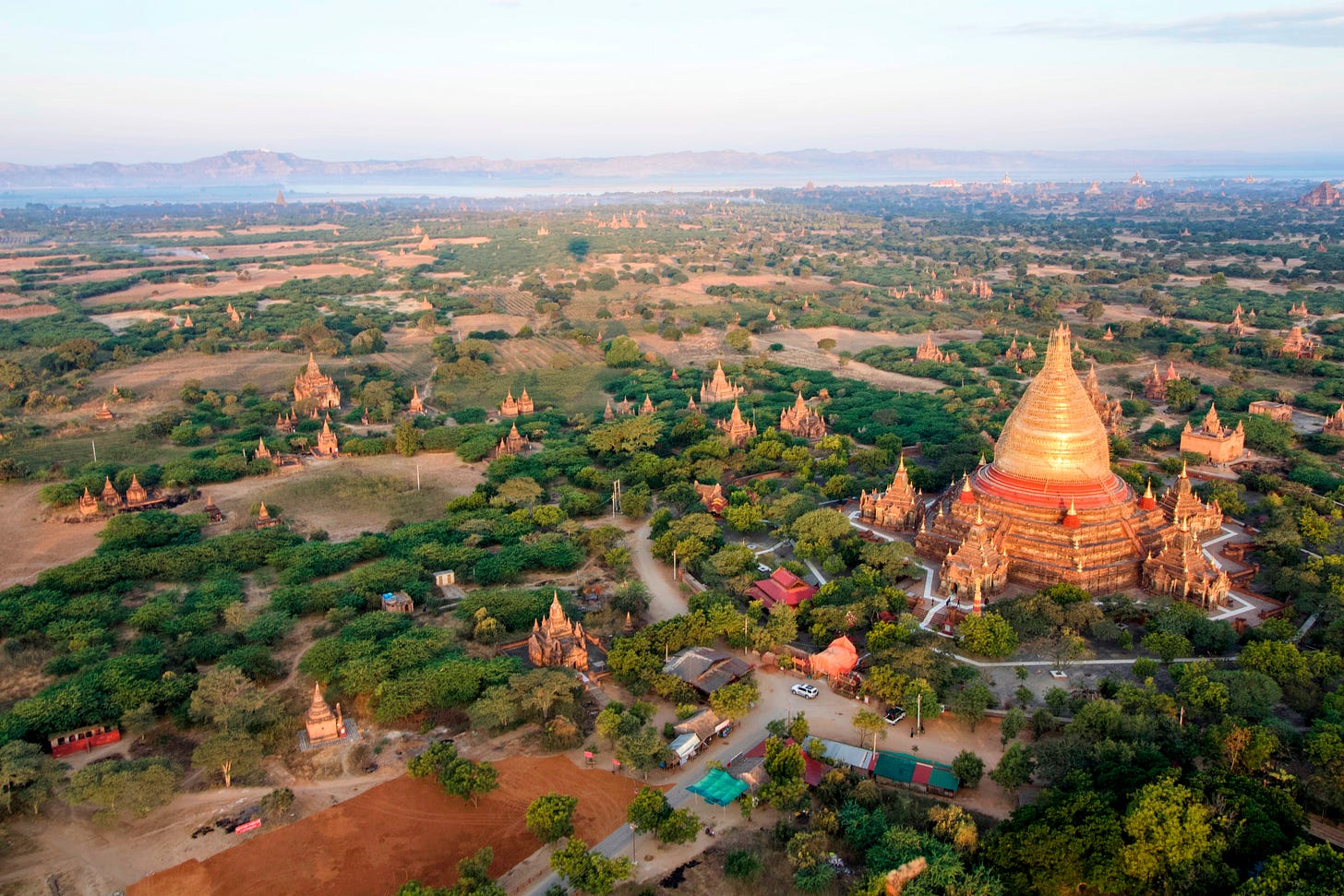
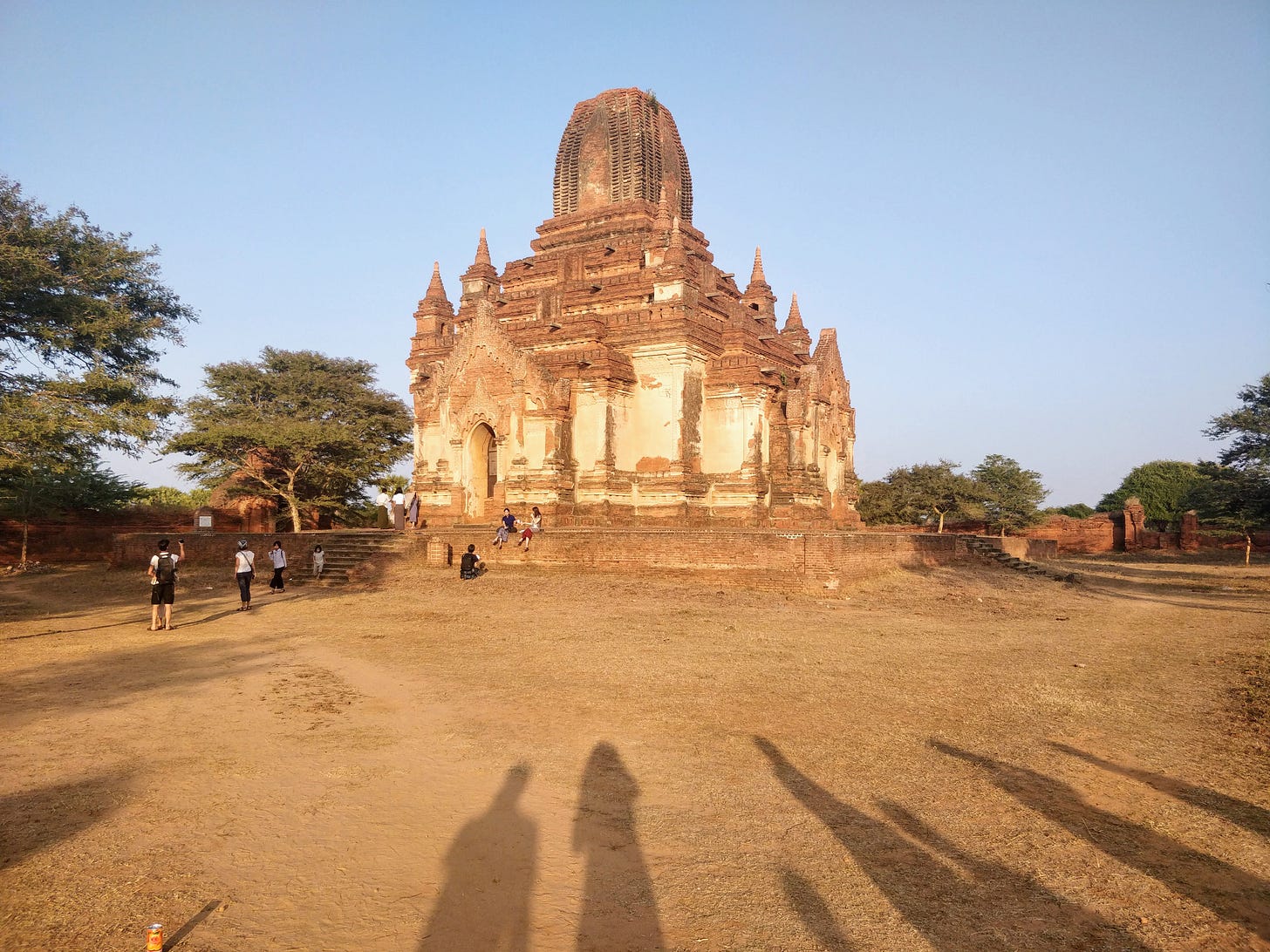

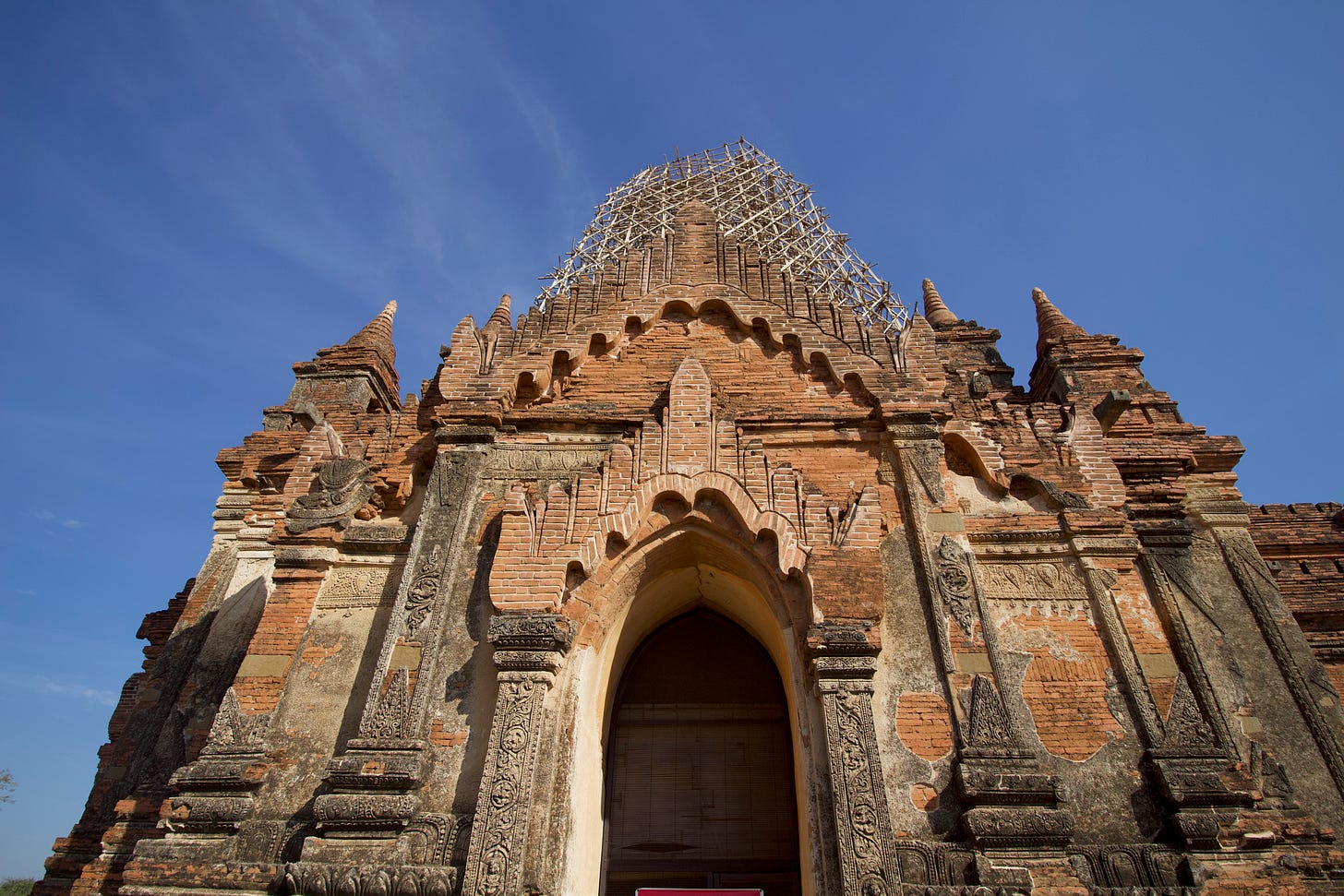
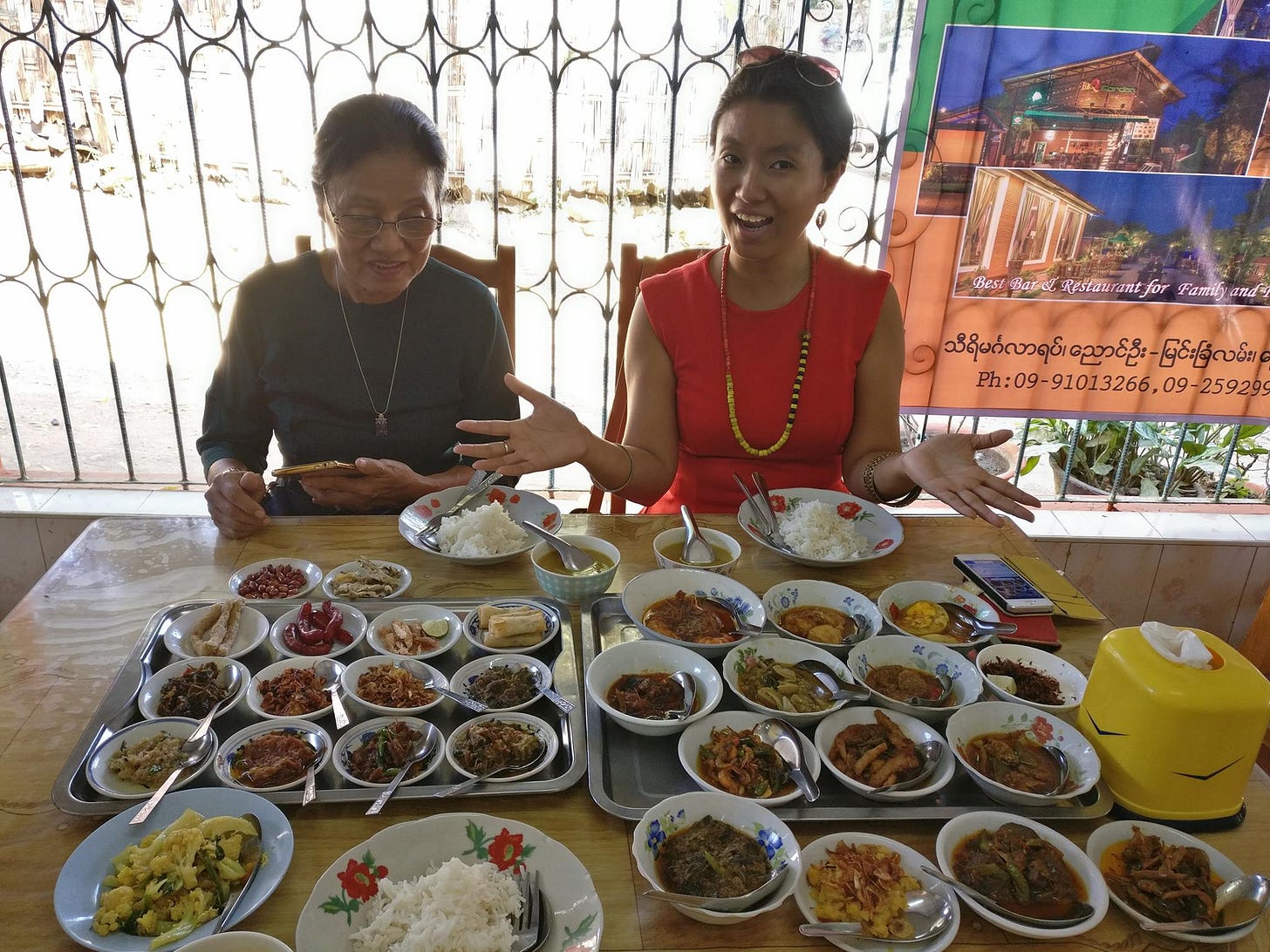
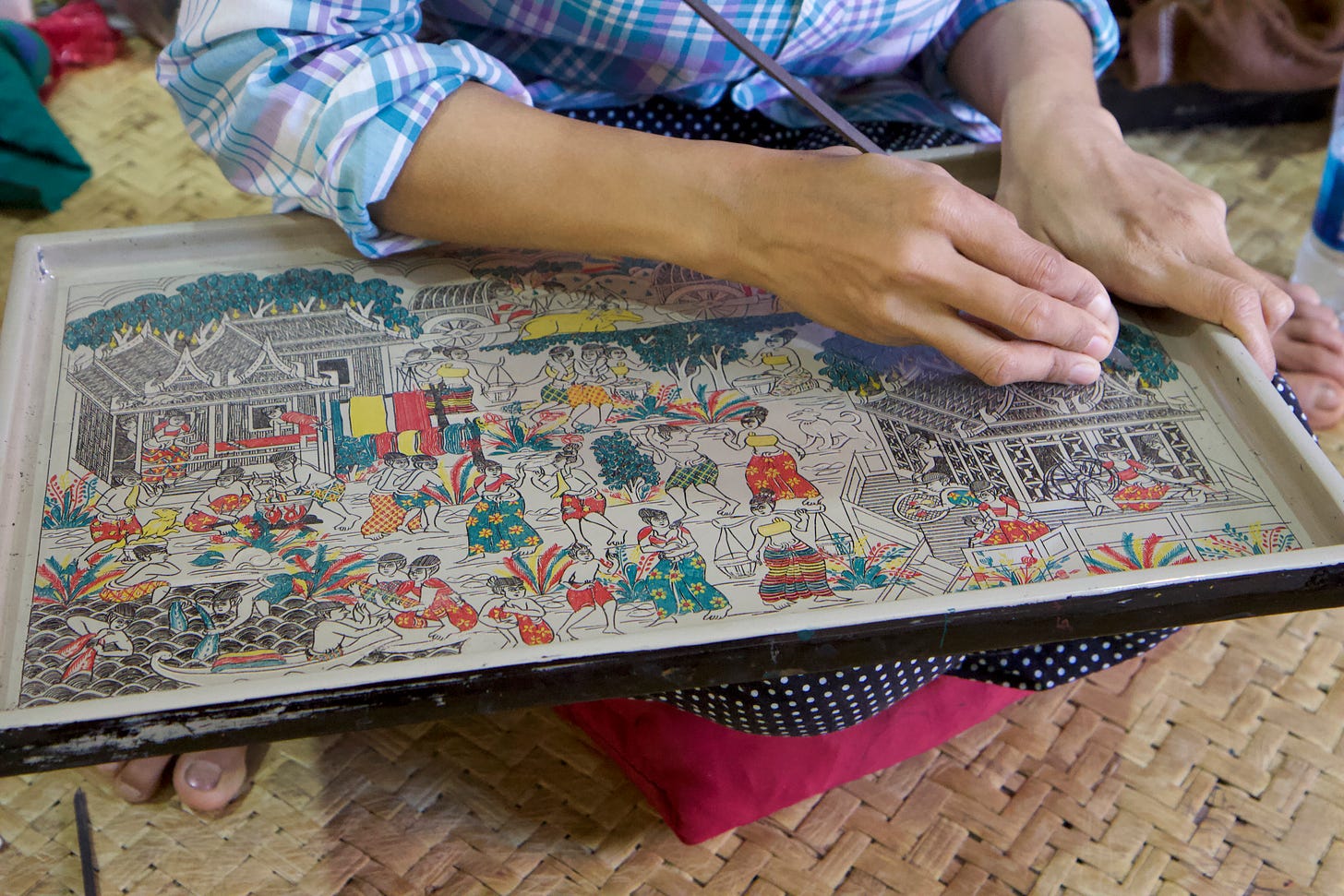



Thank you for this beautiful reflection of your family, and through that, maybe a glimpse of the whole family of Burma/Myanmar. I could feel those solid temple walls keeping them (and hence you, in the future) safe from harm. I hope that they can still keep your hopes, and those of the people, safe in expectation of better times to come.
Also, thanks for your reflections on COP (and quotes from some good friends of mine!). It's good to see these acknowledgements of the importance of food and farming. But as your other two Pickings remind us, there are definitely those who can slow progress, or throw sand in the eyes of the people and politicians who make the decisions, sadly. Progress is so painfully slow. It only took 28 COPs to get recognition that we need to transition from fossil fuels to protect the climate. What must we wait for COP 50 for?
Have a wonderful 2024, and bring us more great stories, great news, and great hope.
Mingalaba! I remember walking around Thambula during my time living in Yangon between 2014 - 2016. It was a magical time, full of optimism and reawakening. Bagan seem to represent an otherworldly time when peace, meditation and everyday life mingled together seamlessly. A time that might reappear. Thank you for taking me back there to that time and place with your writing. Jezu tin bar de.